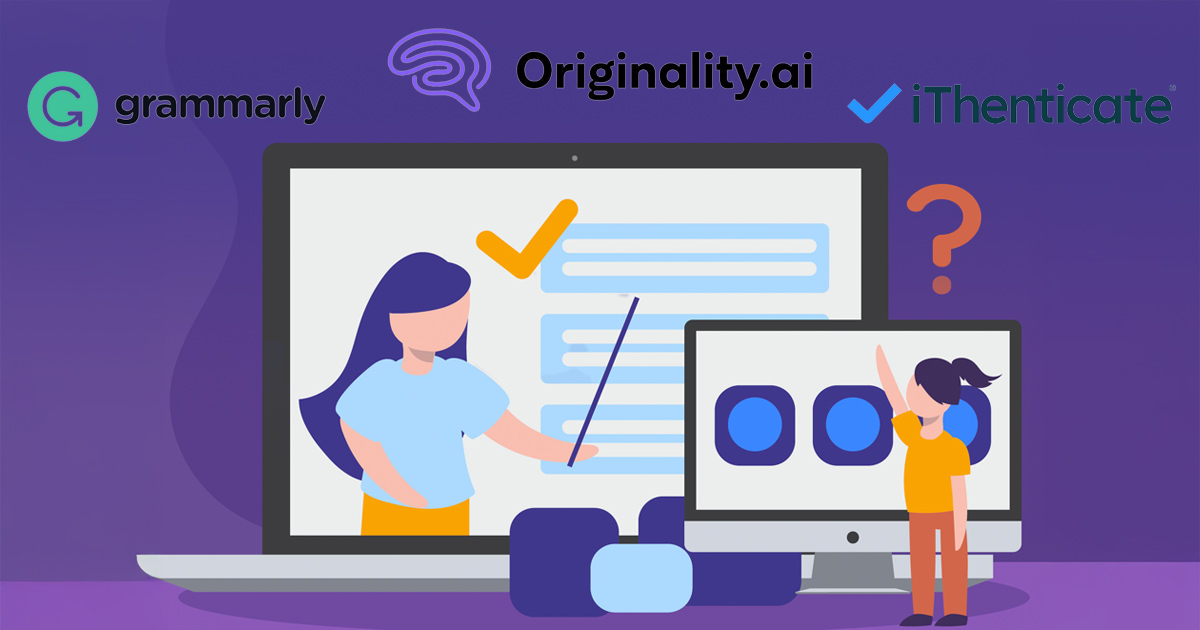10 Best Plagiarism Checkers To Ensure Your Content is Original

Creating original content is a top priority for students, researchers, marketers, and content creators. Whether you’re writing a blog, a research paper, or an ebook, checking your work for originality can save you from serious trouble.
But what is the best plagiarism checker for different types of users? Some tools work best for academic writing, while others are great for web content and SEO. Knowing which to use will help you ensure your written content is plagiarism-free.
1. Originality.ai
Originality.ai is ideal for anyone creating online content. It scans for both AI-generated text and plagiarism in a single run. This tool is especially helpful for marketers, publishers, and educators. It handles advanced types of plagiarism like patchwriting with impressive accuracy. The AI Lite model hits 98 percent accuracy, with under one percent false positives. Although it doesn’t search academic journals, it covers online sources thoroughly. Users can pay per use or choose a subscription.
Why It’s One of the Best
Originality.ai combines AI detection and plagiarism checking in one scan. This makes it great for identifying both lazy rewrites and copied content.
Best Use
Best suited for bloggers, agencies, and freelance writers who need reliable scans for SEO and originality.
2. Grammarly
Grammarly helps with grammar, tone, and clarity, but it also detects plagiarism. It compares your content against academic journals and billions of websites. While it may not offer deep academic detection, it’s perfect for everyday writing.
Why It’s One of the Best
Grammarly provides extra writing help, so you can fix your tone and grammar while checking for plagiarism.
Best Use
Ideal for professionals, bloggers, and students looking for quick checks on emails, blog posts, or assignments.
3. iThenticate
iThenticate is designed for scholars and researchers. It scans academic databases, online journals, and web pages. It also works with Crossref, the same system used by many academic publishers. You’ll get similarity reports that include confidence scores.
Why It’s One of the Best
Many top academic journals use iThenticate before accepting submissions. It sets the standard for research integrity.
Best Use
Best for institutions and researchers submitting journal articles, dissertations, or white papers.
4. Scribbr
Scribbr uses Turnitin’s technology to catch both plagiarism and AI-generated content. It checks your work against online sources and academic papers. The tool also shows side-by-side comparisons, making it easier to fix issues.
Why It’s One of the Best
It offers detailed feedback while keeping the tool affordable and accessible for students.
Best Use
Perfect for students submitting papers and educators reviewing assignments before grading.
5. Copyscape
Copyscape remains one of the most trusted tools for online publishing. It scans the internet for duplicates of your published web pages. Many content marketers and bloggers rely on it to protect their work.
Why It’s One of the Best
Copyscape has long been a favorite for SEO professionals because of its fast scans and accurate results.
Best Use
Great for detecting scraped content or unauthorized duplication on the web.
6. Quetext
Quetext offers a straightforward tool with color-coded feedback and helpful context for each match. The interface is user-friendly and supports both free and paid use.
Why It’s One of the Best
It strikes a balance between ease of use and quality results, even for those new to plagiarism detection.
Best Use
Ideal for students, teachers, and casual writers who want a simple and clear report.
7. Turnitin
Turnitin leads the way in academic settings. It compares student work with a massive database of papers, books, and websites. Most schools and universities use it to encourage originality and proper citations.
Why It’s One of the Best
Turnitin’s integration with learning platforms and its detailed reports make it a go-to for educators.
Best Use
Best for school or university instructors who need to monitor academic submissions.
8. Unicheck
Unicheck integrates well with systems like Canvas and Moodle. It checks student work in real time and flags possible plagiarism or paraphrasing. Reports are clear and easy to understand.
Why It’s One of the Best
It blends into digital classrooms without disrupting learning, which helps teachers manage assignments more easily.
Best Use
Great for teachers who use digital platforms and want quick feedback on student work.
9. Plagscan
Plagscan serves both corporate and academic users. It checks documents against a huge library of online content and scholarly works. The tool also supports different file types and provides detailed reports.
Why It’s One of the Best
Its strong database coverage and flexible use cases make it popular in large organizations.
Best Use
Best for schools and companies that require a deep and reliable plagiarism report.
10. Writer.com
Writer.com includes a plagiarism checker in its suite of tools. It helps businesses create original, on-brand content. The platform supports Google Docs and browser extensions for easy access.
Why It’s One of the Best
It keeps team-written content aligned and plagiarism-free, which is useful for maintaining a brand voice.
Best Use
Ideal for marketing teams and companies creating blogs, social media posts, and internal documents.
Protect Your Voice and Build Trust
Original content reflects your unique voice and expertise. Plagiarism not only risks penalties but also weakens your credibility with readers, clients, or educators. Using a top plagiarism checker helps you safeguard your originality and confidence in every piece you create.
Think of these tools as partners in your creative process. They don’t just catch copied text; they support your growth as a trustworthy writer or professional. When you keep your content clean, you build lasting respect and open doors to new opportunities.
